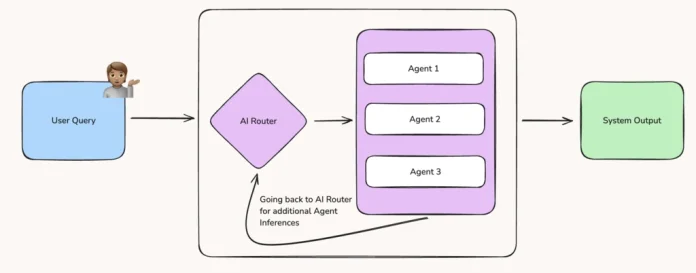AI Agent Orchestration Explained for Beginners
In today’s rapidly evolving AI landscape, organizations seek smarter, more scalable solutions for complex challenges. Enter AI agent orchestration—a powerful way to coordinate multiple AI agents so they function together seamlessly, much like musicians in an orchestra. But what exactly does this mean, and why should you care? In this beginner-friendly guide, we’ll break down what AI agent orchestration is, why it matters, and how it actually works, all while using straightforward examples to make things crystal clear.
What Is AI Agent Orchestration?
AI agent orchestration refers to the process of coordinating and managing several AI agents so they collaborate to achieve a shared, complex goal. Imagine each AI agent as a specialist musician: a violinist, a percussionist, and so on. The orchestration platform acts as the conductor, ensuring each agent knows its part, and that all of them work harmoniously toward the desired outcome.
Let’s Break Down the Key ConceptsAI Agents
An AI agent is an automated program powered by artificial intelligence. Some examples include:
- Chatbots answering customer queries
- Machine learning models detecting fraud
- Systems that optimize shipping routes
Each agent has specific strengths and limitations, performing simple or complex tasks as needed. To dig deeper into what defines an AI agent, check out what is an ai agent.
Orchestration
Orchestration is the art of designing, deploying, and managing the relationships between agents. It defines:
- How tasks are split up
- The workflow and order of execution
- How agents share data and make decisions together
Complex Goals
Single agents are often unable to solve complicated, multi-step problems. Orchestration takes these big challenges, divides them into smaller, manageable pieces, and assigns specialized agents to handle each one. The result? Problems are tackled more efficiently and thoroughly.
Why Is AI Agent Orchestration Important?
If a single agent is like a skilled craftsman, orchestration is like assembling a team of experts, each handling what they do best. Here’s why this is a game-changer:
1. Solving Complex Problems
Modern problems—think customer service automation, supply chain logistics, or large-scale data analysis—are often too big for one AI to handle alone. By orchestrating a group of agents, organizations can break down and conquer these challenges piece by piece.
2. Increased Efficiency
Automating complex workflows means faster results and fewer errors. Orchestration minimizes the need for human intervention, streamlining tasks like ticket routing, order processing, or customer engagement.
3. Improved Accuracy
When agents combine their unique abilities—like one agent analyzing text while another checks sentiment or pulls up knowledge resources—the results are far more accurate and reliable than a single agent could produce.
4. Greater Flexibility
Business needs are always changing. Orchestration platforms can quickly adapt, allowing you to add, remove, or tweak agents as conditions evolve, without having to overhaul the whole system.
Key Components of an AI Agent Orchestration Platform
A robust orchestration platform is made up of several essential pieces. Let’s unpack these:
1. Workflow Engine
This is the brain of the operation. The workflow engine designs the sequence of steps each agent should follow and the dependencies between tasks.
2. Agent Registry
Think of this as a master list. The agent registry keeps track of all your available AI agents and their particular capabilities.
3. Communication Layer
For agents to work together, they must “talk” to each other and share data. The communication layer facilitates this interaction smoothly and securely.
4. Monitoring and Management Tools
Real-time dashboards and performance analytics allow you to see how your orchestrated agents are performing, spot issues, and make improvements on the fly. Interested in what a real-world, enterprise ai platform looks like? Explore the enterprise ai platform to see practical orchestration in action.
Real-World Example: Customer Service Automation
To make orchestration concrete, let’s look at a scenario many businesses face: automating customer service inquiries.
In a typical AI agent orchestration setup for customer service, you might have:
- A Natural Language Processing (NLP) Agent: Understands what the customer is asking.
- A Knowledge Base Agent: Pulls relevant FAQs or documentation.
- A Chatbot Agent: Communicates the response back to the customer.
- A Sentiment Analysis Agent: Monitors the customer’s emotions and flags issues for human intervention if things get heated.
The orchestration platform coordinates these agents, moving the customer’s inquiry through each step efficiently. The result? Faster, more accurate resolutions and a better customer experience.
To see how enterprises are leveraging orchestration for real-world value, visit the enterprise ai agent page for use cases and practical examples.
Types of AI Agent Orchestration
Depending on the challenge, different orchestration styles may be used:
- Sequential: Each agent handles a part of the process one after another.
- Parallel: Multiple agents work on different tasks at the same time, combining outcomes later.
- Conditional Routing: Agents jump in based on triggers, context, or customer needs. For example, escalations only go to sentiment analysis if negative emotions are detected.
Getting Started with AI Agent Orchestration
If you’re new to this technology, here’s how you can begin:
- Identify Your Business Problem: Pick a task that’s repetitive, complex, or time-consuming for humans.
- Define Agent Roles: Break the task into logical parts and assign agent responsibilities.
- Select an Orchestration Platform: Use enterprise-ready platforms that simplify designing, testing, and managing orchestration.
- Integrate and Test: Connect your agents, define the workflow, and run pilot tests.
- Monitor and Optimize: Watch real-world performance and iteratively fine-tune your system.
Benefits of AI Agent Orchestration for Enterprises
Large companies are feeling the pressure to automate, innovate, and do more with less. That’s where orchestration shines:
- Scalability: Handle growing workloads by adding more agents without starting from scratch.
- Consistency: Standardized responses and actions mean fewer mix-ups and better compliance.
- Human Partnership: Free up employees for more creative or strategic tasks as agents handle routine work.
AI Agent Orchestration: Your Next Step in Automation
Think of AI agent orchestration as assembling your dream team of digital employees, each excelling at a specialized job. The orchestration platform is their manager, ensuring that every step is handled with precision, and together, they deliver exceptional outcomes.
Whether you’re a business leader, data scientist, or technology enthusiast, understanding and leveraging AI agent orchestration can fundamentally upgrade how you solve problems and serve your customers. The future of automation is collaborative, efficient, and endlessly flexible—powered by orchestration.
Frequently Asked Questions1. What is AI agent orchestration in simple terms?
AI agent orchestration is the process of organizing several AI-powered tools to work together, like a well-coordinated team, to complete complex tasks.
2. How is an AI agent different from a regular software program?
AI agents can learn, adapt, and make decisions based on data, whereas regular programs follow strict, unchanging rules.
3. Why do we need multiple AI agents instead of just one?
Different agents specialize in various tasks. Using multiple agents increases efficiency, accuracy, and flexibility.
4. Is AI agent orchestration only useful for large companies?
No! While especially valuable in enterprise settings, even small businesses can benefit from orchestrating multiple AI tools.
5. What are some examples of tasks AI agent orchestration can automate?
Customer support, order processing, data analysis, IT troubleshooting, and marketing campaigns are common uses.
6. What skills do I need to implement AI agent orchestration?
Basic understanding of workflows and AI concepts helps. Many platforms are user-friendly, with drag-and-drop interfaces.
7. Can AI agents communicate with each other directly?
Yes, the communication layer in orchestration platforms enables smooth data exchange and coordination between agents.
8. What happens if one of the AI agents fails?
Monitoring tools detect failures and can reroute tasks to ensure the system keeps running smoothly.
9. How secure are orchestrated AI agent systems?
Industry-leading enterprise ai platform solutions offer built-in security and compliance features to protect data and processes.
10. Where can I learn more or see orchestration in action?
Visit leading solution pages, such as Stack AI, to see real-world applications and success stories.
Unlock the potential of AI agent orchestration and start transforming how you tackle your most complex challenges, today!



